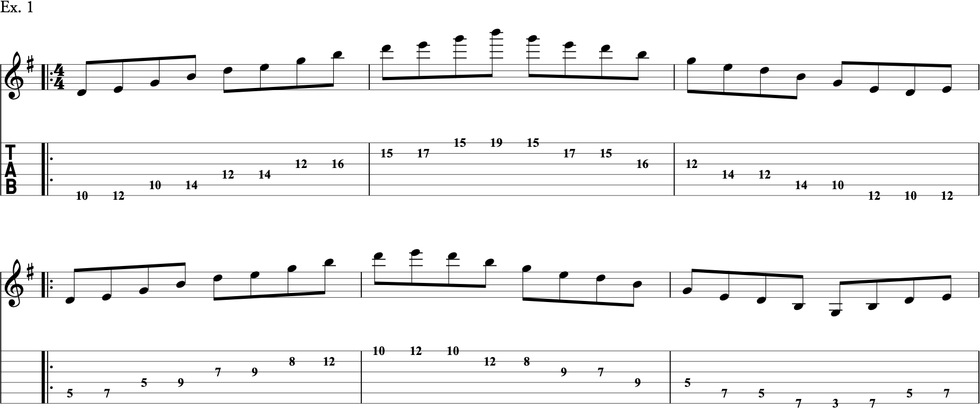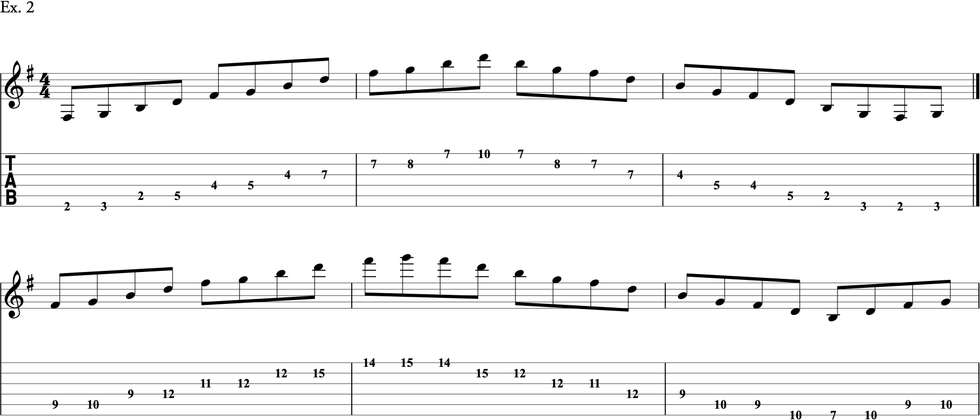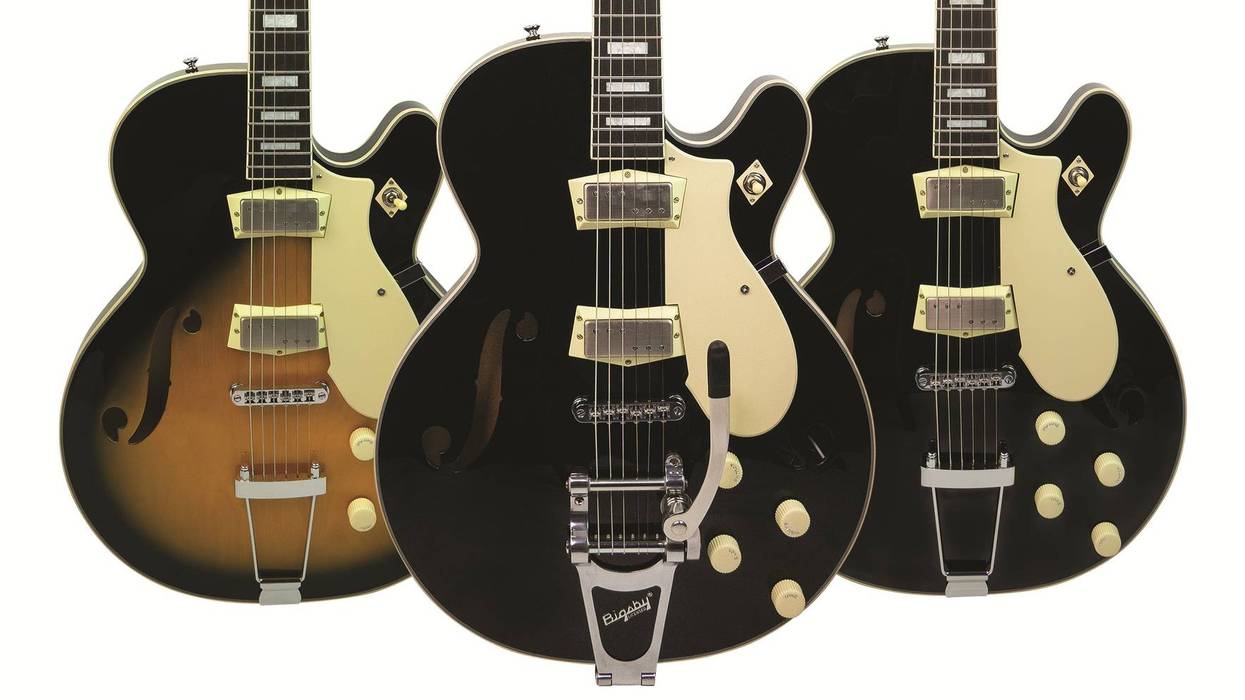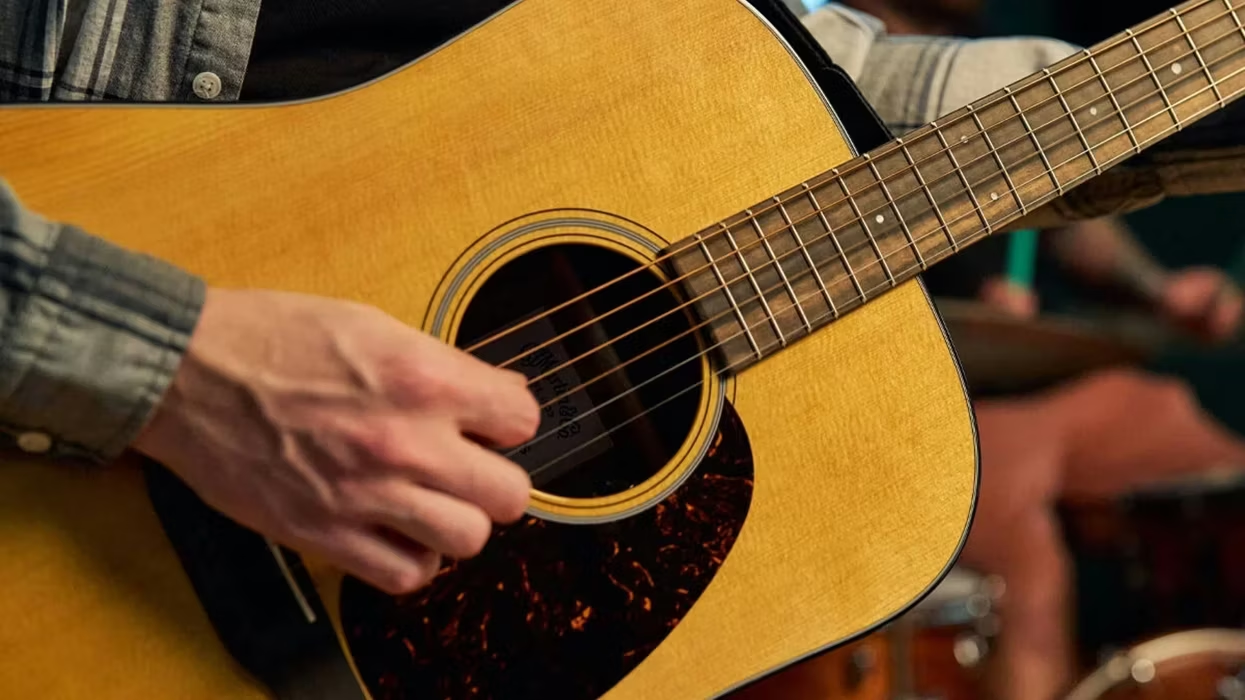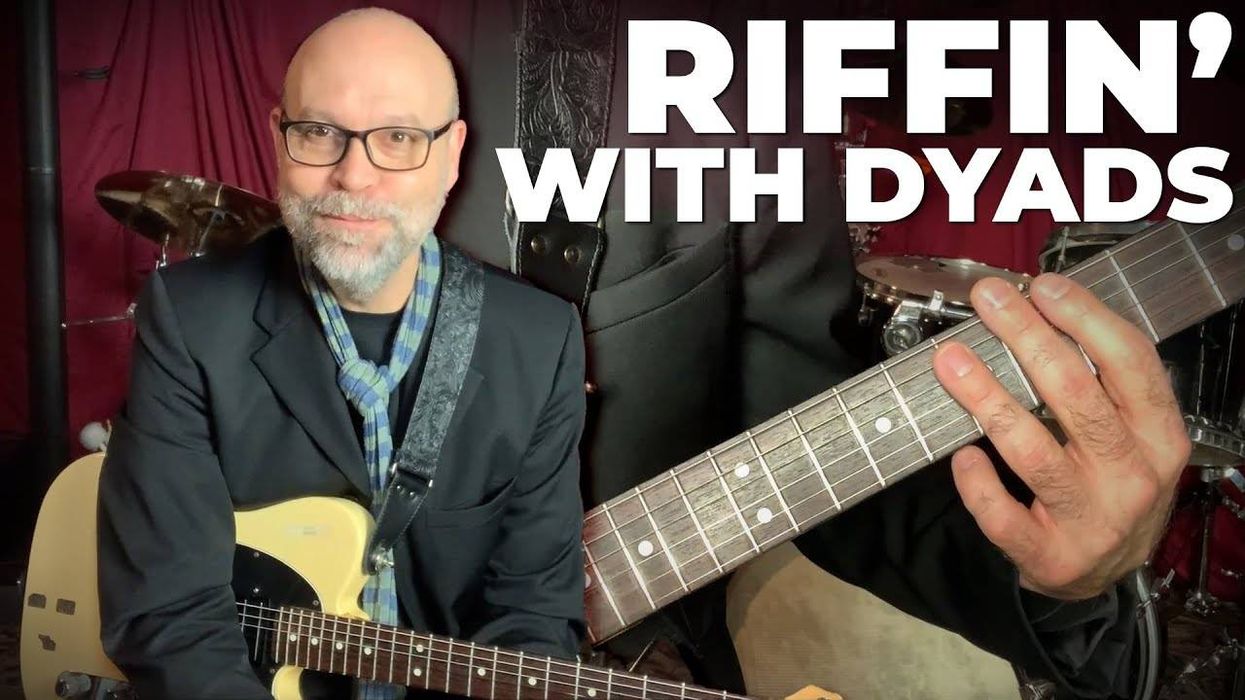Chops: Intermediate
Theory: Beginner
Lesson Overview:
• Craft simple blues-based phrases that lie within the CAGED system.
• Understand how double-stops are used in rockabilly music.
• Improve your Travis picking.
Click here to download a printable PDF of this lesson's notation.
In 2016 we lost one of the most influential guitarists and unsung heroes the world has ever known. The driving force behind Elvis Presley’s first recordings, Winfield Scott “Scotty” Moore III helped shape the sound of rock ’n’ roll and inspire generations of fans. Born in 1931, Scotty caught his big break in 1954 when he was called to do a session with Elvis at Sam Phillip’s Sun Studio in Memphis. History was made that day when Elvis recorded “That’s All Right,” and for about four years, Scotty provided 6-string magic for such Elvis hits as “Heartbreak Hotel,” “Hound Dog,” and “Jailhouse Rock.”
A huge Chet Atkins fan, Scotty grew up listening to country and jazz. This blend would have a dramatic impact on his sound, as he would mix Travis picking with some ear-twisting note choices based on chords, rather than using an obvious scalar approach.
I used a thumbpick on the examples in this lesson to sound as authentic as possible. Using a thumbpick on some notes makes them stand out in comparison to those plucked with the remaining fingertips. Ex. 1 is a classic Scotty-type rhythm riff in E that uses some Travis picking. Play the notes on the 6th and 4th strings with your thumb, and use your index and middle fingers for the double-stops on the 3rd and 2nd strings. This is illustrated in the notation: Attack all the up-stemmed notes with your fingers and down-stemmed notes with your thumb.
Click here for Ex. 1
The next example (Ex. 2) reveals one of the more common elements of Scotty’s lead work: double-stops. It makes sense when you consider that Scotty often performed with just a bass player and drummer, so when it came time to play a solo, he needed to create a strong sense of harmony. The first three phrases begin in the “E” shape of the CAGED system before moving down to the “A” shape and returning to the “E” shape. Those last two measures sit squarely in the “E” shape at the 12th position.
Click here for Ex. 2
Ex. 3 returns to Scotty’s Travis-picking influence by outlining an A chord before leading the idea in a new direction with double-stops. The example begins in the “C” shape and resolves in the “E” shape, though this wouldn’t have meant anything to the legendary guitarist. However, his reliance on moving the five basic chord shapes around the neck is undeniable.
In this version of “Hound Dog”—a song originally recorded by Big Mama Thornton—Moore takes a bluesy solo starting at :45.
Click here for Ex. 3
The blues was an essential part of Scotty’s style, and Ex. 4 shows something he might play over the first eight measures of a blues in E. To use the moves in any given key, it’s important to understand how intervals work within a chord. For example, over the E7, I’m approaching the root and 3 (G#) with a half-step slide. With that information, you’re able to transpose this musical shape all over the neck. Approach each double-stop with this method, and you’ll get a lot of mileage out of this rather simple lick.
Click here for Ex. 4
Ex. 5 shows some of Scotty’s single-note ideas, though the phrase still begins with a double-stop on the top two strings to grab the listener’s attention. Measures three and four use a strange collection of notes. Scotty isn’t thinking of a scale here. The phrase begins with a bluesy flourish and a melodic descent to the root. When he gets there, he moves down a half-step to the 7 (an unusual note to play on a dominant chord, but if it sounds good, it is good), and then up again to resolve to the A chord.
Click here for Ex. 5
Scotty was also a big fan of using three-note grips. In Ex. 6, you can see how these ear-grabbing sounds would work over our blues progression. It begins with an E triad in the “D” shape. It’s genuinely amazing how many great chordal licks Scotty could come up with by using just a few chord forms.
Click here for Ex. 6
Ex. 7 is a little trickier, but a great example of how to move from an A chord to an E chord using some double-stops and single notes along with position shifts and sixths. This is very much a country phrase and evidence of the genre’s importance to the rockabilly sound.
Click here for Ex. 7
The final example (Ex. 8) is a longer, 20-measure piece outlining a full progression with Scotty's superb Travis-picking ideas. While this isn’t a column specifically on Travis picking with a collection of exercises to develop that skill, here are a couple of simple tips that should help you navigate this music.
First, focus only on the bass notes. The thumb needs to be automatic. Strive to put no thought into playing the bass part. This takes time but eventually you’ll be free to concentrate on the melody. The last part to absorb is the excellent ending chord. It’s a maj6/9 with the root on top—very common in the rockabilly style.
Click here for Ex. 8
From here it’s easy to hear Scotty’s immense influence on guitardom. It would be well worth your time to go down a rabbit hole of YouTube vids from the CAAS (Chet Atkins Appreciation Society) conference. Nearly every player from that scene owes a debt to Mr. Moore.








